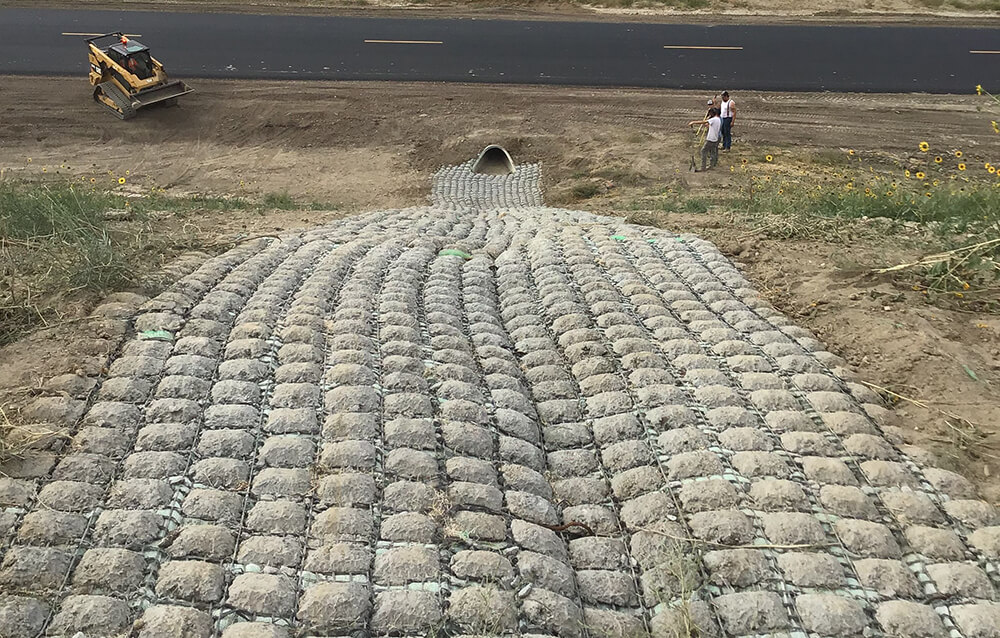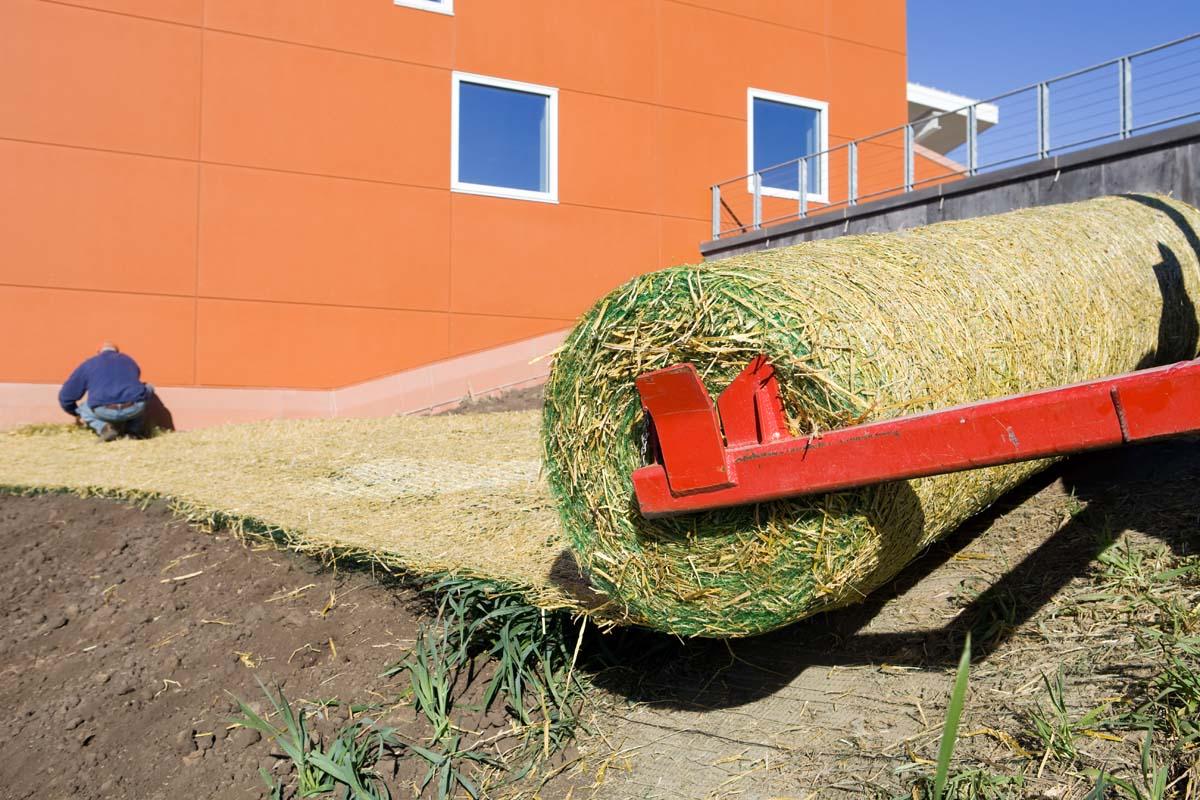Professional Solutions by Memphis Erosion Control Solutions excavation
Wiki Article
Ideal Practices for Disintegration Control in Building And Construction Projects
Are you working on a construction task and worried concerning erosion control? In this article, we will assist you through the best techniques for stopping erosion on your website. hydroseeding. Get all set to tackle erosion head-on and guarantee the success of your building job.5 Important Disintegration Control Techniques

To successfully regulate disintegration on your construction site, you'll need to implement crucial methods such as slope stabilization and debris control steps. Incline stabilization is important in stopping dirt disintegration on steep slopes. You can attain this by utilizing approaches like terracing, which entails developing straight steps on the slope to decrease water circulation and advertise the absorption of rainwater. One more effective strategy is making use of erosion control coverings or mats, which are positioned on the incline and aid maintain soil particles while permitting plants to expand. Debris control steps are additionally essential to protect against sediment drainage into neighboring water bodies. One effective approach is the installation of silt fences along the border of the building and construction site. These fencings work as obstacles, capturing sediment-laden water and allowing it to work out before it gets to the water bodies. Furthermore, you can make use of sediment containers, which are momentary retention fish ponds developed to catch sediment and allow water to slowly drain off. Executing these important erosion control techniques will assist lessen the adverse ecological impact of your construction job and make sure compliance with laws.
Effective Sediment and Drainage Monitoring

You can efficiently manage debris and runoff in your building job by carrying out appropriate disintegration control procedures. Debris and drainage monitoring is vital to avoid disintegration and shield the surrounding setting. One efficient procedure is the installation of silt fences along the perimeter of the construction site. These fences assist to include debris and avoid it from getting in nearby water bodies. Another essential practice is the execution of erosion control coverings or floor coverings. These coverings provide a safety layer on bare dirt, reducing the effect of rains and preventing erosion. Additionally, using debris containers or debris traps can assist to catch debris and prevent it from getting in stormwater systems. Normal maintenance of these measures is necessary to guarantee their effectiveness throughout the construction job. This includes checking and cleansing debris basins and frequently replacing silt fences and disintegration control blankets as needed. By carrying out these erosion control steps, you can effectively take care of sediment and overflow in your construction job, minimizing the effect on the atmosphere and following regulatory requirements.
Secret Factors To Consider for Incline Stablizing
When considering incline stablizing, it's essential to examine the surface and determine prospective areas of instability. You need to carefully examine the incline's features, such as its make-up, water drainage, and angle patterns. Try to find indicators of disintegration, such as revealed roots, cracks, or down dirt. These signs can give you a concept of where stablizing procedures might be needed.When you have actually determined the unpredictable locations, you can start carrying out procedures to stabilize the slope. One usual method is using preserving wall surfaces or terracing to produce a collection of flat steps, which can assist disperse the weight and stop further disintegration. Another alternative is to grow vegetation on the slope, as the origins can aid anchor the dirt and control erosion. Additionally, mounting disintegration control coverings or mats can offer immediate security while greenery becomes well established.
It's vital to routinely keep track of the supported slopes to guarantee their performance. Watch out for any indications of activity or disintegration, and take immediate activity if needed. Regular maintenance, helpful hints such as checking and fixing any type of damaged actions, is additionally necessary to make sure long-lasting stability.
Best Practices for Vegetation and Soil Defense
One reliable way to protect plant life and dirt on slopes is by consistently examining for indicators of disintegration and taking prompt action if necessary. Beginning by evaluating the incline for any indications of erosion, such as subjected roots, bare dirt spots, or debris buildup at the base. Implement disintegration control measures such as setting up erosion control blankets, mulching, or also building maintaining wall surfaces if needed.Implementing Correct Drainage Solutions
To properly carry out correct drainage systems, it's essential to take into consideration the slope gradient and dirt type. When it concerns handling water circulation and stopping disintegration, recognizing these elements is vital. The incline gradient plays a substantial function in determining how water moves throughout the land. Steeper inclines can bring about much faster water circulation, enhancing the risk of erosion and flooding. On the other hand, gentler inclines allow water to stream much more slowly, minimizing erosion possibility. By analyzing the incline gradient, you can create an effective drainage system that accommodates the natural water motion.Dirt kind also influences drainage system design. Different soil types have differing degrees of leaks in the structure, influencing exactly how water is taken in and drained. For example, sandy dirts tend to drain faster as a result of their crude structure, while clay soils have a slower drain price as a result of their compact nature. Comprehending the soil kind assists in selecting appropriate drainage techniques, such as utilizing permeable products or mounting French drains pipes. Additionally, taking into consideration the dirt qualities aids avoid waterlogging, which can lead to poor plant growth and damage to frameworks.
Final Thought
In final thought, when it comes to disintegration control in construction jobs, you should follow these finest methods. Think about incline stabilization approaches to guarantee the stability of the site. By following these essential techniques, you can effectively manage erosion and ensure the success of your building and construction job.To successfully manage disintegration on your construction website, you'll need to apply essential methods such as slope stabilization and debris control procedures. Slope stabilization is essential in protecting against dirt erosion on high inclines. One more reliable strategy is the usage of disintegration control coverings or floor coverings, which are positioned on the landscaping with rocks and boulders slope and help keep dirt fragments while allowing greenery to grow. Another alternative is read this post here to plant greenery on the slope, as the roots can help secure the dirt and control disintegration. Implement erosion control procedures such as setting up erosion control blankets, mulching, or also creating retaining walls if needed.
Report this wiki page